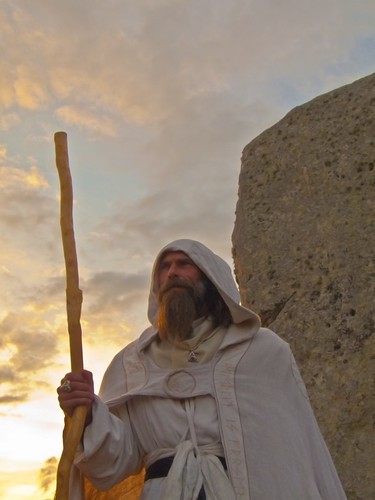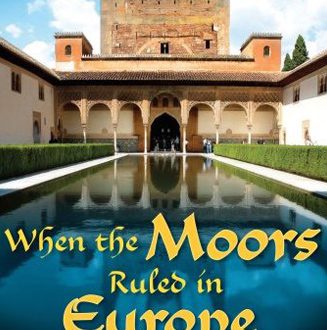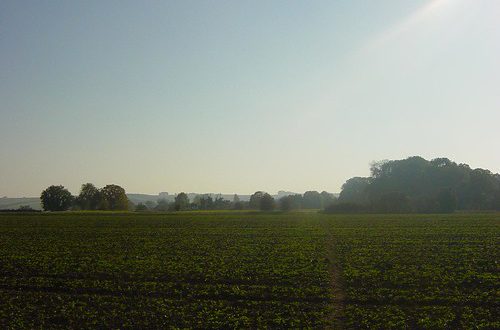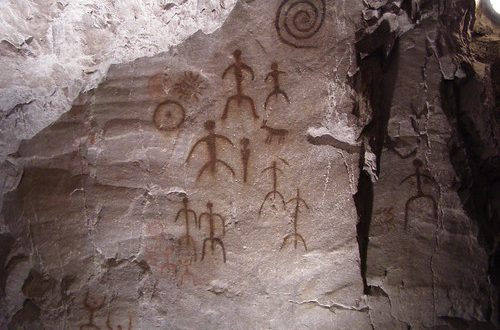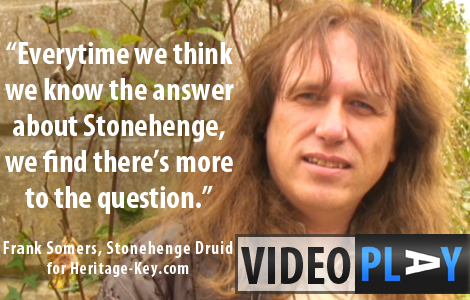 “There’s a passing on of knowledge for over 1,500 years spanning the whole Bronze Age, between our Stone Age ancestors who built Stonehenge and our Druid ancestors who wrote down folklore that we now take from Ireland, Scotland and Wales,” says Stonehenge Druid Frank Somers. “And that means that folklore has earlier origins going right back.”
“There’s a passing on of knowledge for over 1,500 years spanning the whole Bronze Age, between our Stone Age ancestors who built Stonehenge and our Druid ancestors who wrote down folklore that we now take from Ireland, Scotland and Wales,” says Stonehenge Druid Frank Somers. “And that means that folklore has earlier origins going right back.”
We’re stood outside a stately Wiltshire manor on a blustery winter’s morning, self apparent in the unruliness of Frank’s flowing locks. Barely yards away lies Bluestonehenge, a stone circle even older than Stonehenge itself: 2009’s biggest discovery. But Frank sees it more than an archaeological curio: he feels the ancient henge could have huge implications for the Druidic faith he and thousands of other Britons hold so dear: “Potentially it connects the Druids who were talked about in Celtic times, back through the Bronze Age to the Mesolithic Period when Stonehenge was built.
“For this we shouldn’t be laughing at the Druids in connection to Stonehenge.”
Current theories suggest funerary processions began at nearby Woodhenge, travelled down the River Avon to Bluestonehenge before embarking on the long route down The Avenue, a 2-mile road linking it with Stonehenge. As a veteran of the famous Stonehenge solstice celebrations, Frank empathises with the ancient ceremonies that went on in the area.
“You can just imagine people getting excited on the eve of the summer solstice,” Frank says, “floating in their boats, disembarking here, lighting a great bonfire and sitting in their stone circle, gathering in the energies and the focus of the ancestors before processing up to the great henge.”
As we pull up in the car park outside Stonehenge a little later, all eyes are on us. And it’s not hard to see why: Frank’s outfit of leather maille, tabard and trademark crook couldn’t better fit the sartorial stereotype of a Druid. But it’s clear that he cares a great deal about the ritual landscape that has shaped Druidic traditions – as do a group of hardy pagan protesters, banners unfurled and in garrulous mood as they remonstrate against English Heritage’s refusal to let people move amongst the site’s massive stones.
We don’t need to pay the entrance fee: Frank is content to show us Stonehenge’s ancient landscape from a field just opposite the famous stone circle. To our right is the mysterious Cursus, a huge 2-mile earthwork whose use is still hotly debated today. A bit further round is The Avenue, before Frank points out the King Barrows – burial places for dozens of whom he calls ‘the ancestors’, the prehistoric rulers of the region. “Druidry is about becoming synchronised with nature,” Frank says, “but also with the ancestors.” No wonder, then, that Druids are outraged at the archaeological removal of human remains around Stonehenge.
No monument has ever lived such an ephemeral life as Stonehenge. As Frank points out, “It’s a meeting place. It’s a calendar. It’s a temple. It’s a living space where people come together at very significant times to do very significant things. Every time we think we know the answer, we find there’s more to the question.”
While most people nowadays look at Stonehenge as a relic of a time long forgotten, Frank feels the entire landscape is humming with the energy of its former residents. “We feel that here our ancestors are talking to us,” he says. “This is a landscape where there are dozens of these ancestors. We don’t know an awful lot about them but they’re buried all over the landscape.”
Some people might choose to mock the Druids with their pagan practices, eccentric nature and outspoken views. But it’s hard not to feel a modicum of spirituality when faced with Stonehenge, a place that’s been the centre of British worship for over 5,000 years. Time will only tell whether Frank’s linking the Druids with the creation of Britain’s best-known feature has any legs; for now he’ll have to looks on as archaeologists uncover yet more about Wiltshire’s ancient history.
HDVideo: Stonehenge and the Druids: Stonehenge and Bluestonehenge
(Click here to read the transcript)
Watch out for more videos on Druids and Stonehenge, coming soon
You don’t have to travel to Wiltshire to see the splendour of Stonehenge and its history. Check out our very own Stonehenge Virtual to see the ancient stone circle, its local landmarks, legends and characters come to life in the comfort of your own home. Heritage Key – Unlock the Wonders.

